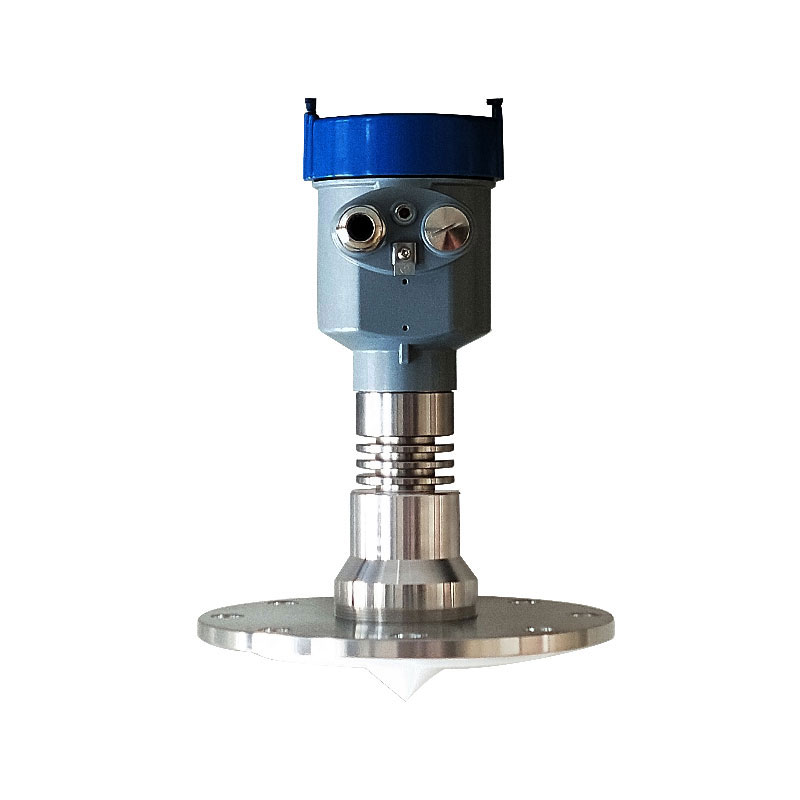Tianyi Sensor IOT Technology Co., Ltd
Sales Manager:Ms. Emily Wang
Cel,Whatsapp,Wechat:+86 15898932201
Email:info@fengtutec.com
Add:No. 155 Optoelectronic Industry Accelerator, Gaoxin District, Weifang, Shandong, China

Sales Manager:Ms. Emily Wang
Cel,Whatsapp,Wechat:+86 15898932201
Email:info@fengtutec.com
Add:No. 155 Optoelectronic Industry Accelerator, Gaoxin District, Weifang, Shandong, China

Model:YW-26B
Brand:tianyi
1.Corrosive liquid level sensor product principle
Corrosive liquid level sensor is a non-contact, continuous ultrasonic liquid level sensor that is ideal for measuring hot, corrosive liquids and sewage.The radar level antenna emits narrower microwave pulses and transmits them downwards through the antenna. After contacting the surface of the medium to be tested, the microwave is reflected back and received by the antenna system again. The signal is transmitted to the electronic circuit part and automatically converted into a level signal (because the microwave propagation speed is extremely fast, the time it takes for the electromagnetic wave to reach the target and return to the receiver through reflection is almost instantaneous).
2.Corrosive liquid level sensor technical parameters
Product Features: Tetrafluoroconical antenna
Typical applications: liquids, powders, high sanitary levels, easy crystallization, condensation, easy adhesion of oil smoke and dust, etc.
Measuring range: 30 meters
Antenna material: PTFE (optional)
Accuracy: ±5mm
Process temperature: -40~260℃
Process pressure: -0.1~4.0Mpa
Power supply: 24vDC (two wires, four wires)
Signal output: 4~20mA/Har (two wires/four wires)
RS485/Modbus
Process connection: flange (≥DN50 optional)
Protection level: IP67
Frequency range: 26GHz
Protection level: IP67
Explosion-proof grade: ExiaⅡC T6 Ga/Exd ia IIC T6 Gb
On-site display: LED (standard)
Cable entrance: M20*1.5, ½NPT (optional)
Housing material: cast aluminum, 304 stainless steel (optional)
3. Corrosive liquid level sensor product features
The antenna is small in size and is easy to install; non-contact radar, no wear and pollution.
Almost not affected by corrosion and foam; almost not affected by changes in water vapor, temperature and pressure in the atmosphere.
Severe dust environments have little impact on the high-frequency level gauge operation.
Shorter wavelengths and better reflect on slanted solid surfaces.
The beam angle is small and the energy is concentrated, which enhances the echo capability while also helps avoid interference.
The measurement blind spot is smaller, and it will also achieve good results for small tank measurements.
High signal-to-noise ratio allows better performance even in fluctuations.
High frequency is the best choice for measuring solid and low dielectric constant.
With the intensification of climate change impacts, the frequency and destructiveness of flood disasters have significantly increased, posing severe challenges to public safety and socioeconomic development. Now that summer, a season prone to floods and droughts, has arrived, to enhance disaster pre...
With the rapid advancement of urbanization, construction sites, road works, and material storage yards are scattered across various corners of cities. During construction and operation, these sites inevitably generate environmental pollutants: dust and noise.A dust detector is an intelligent d...
Traditional flow measurement involves trekking through mountains and rivers, enduring sun and rain, while modern technology can achieve fully automatic monitoring with just one device.River flow measurement is a crucial part of water conservancy work, directly related to flood control, drought relie...
In underground coal mine operations, ensuring the safety of personnel and the smooth progress of work is of great significance. The industrial product, the Toxic gas detector, as a safety detection device, shoulders the important responsibility of safeguarding the safety of the mine. It can accurate...